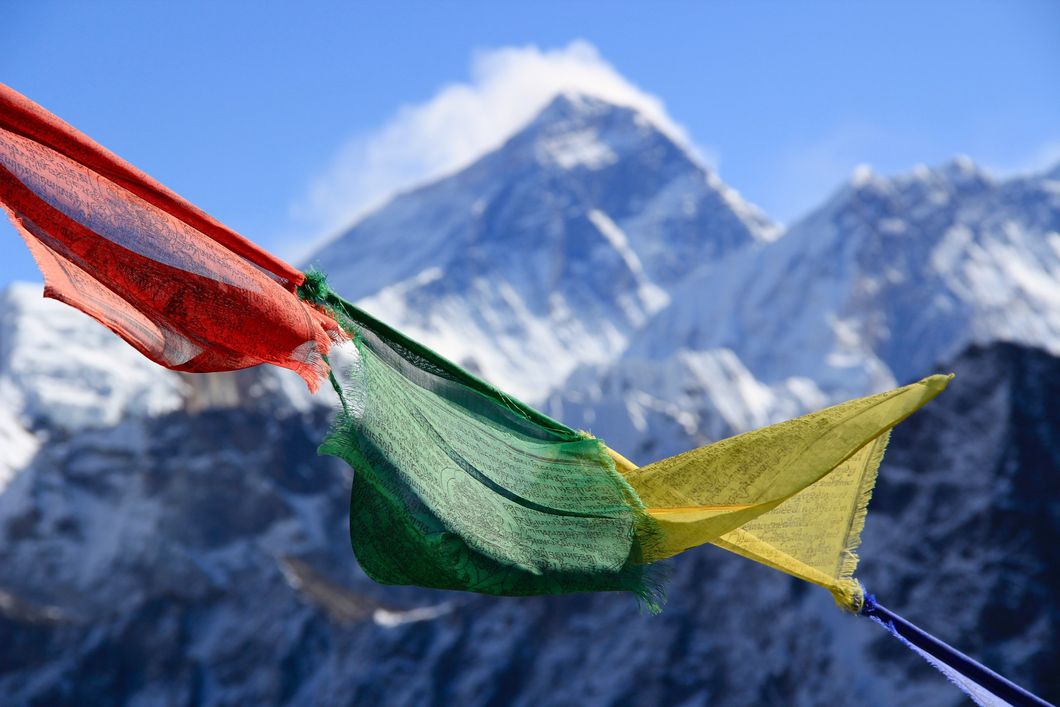As the weather window for summiting Everest comes back around again this year, members of the mountaineering community hold their breaths as friends and family risk their lives for a shot at the summit. For a few weeks, usually in May, the weather around Everest is finally warm and clear enough for climbers to stand on top. Unspeakable cold and a terrifying monsoon season keep climbers away for the rest of the year.
Although it often takes more than two months to summit Everest, it is by no means the most difficult mountain to climb. That honor can go to K2 or Annapurna, peaks so treacherous and technically demanding that only the world's elite have managed to stand atop. Many climbers die in the process due to weather conditions, avalanches, exposure. Hubris and greed for glory sometimes shadow good reason and common sense, especially as a low oxygen environment limits thinking capacity.
Everest is instead notable for how tall it is, which, before bottled oxygen, made the peak nearly impossible to reach. Even expert mountaineers suffer as the mind's and body's faculties deteriorate at an alarming rate at altitudes above 26,000 feet. The peak of Everest is at 29,035 feet. At this height, the lack of oxygen dictates that thinking and movement require an inconceivable effort, and it's common for each step to take 10 or more agonizing breaths.
However, Everest is not "technically" difficult, meaning that it doesn't take much special equipment or advanced climbing moves to reach the top. People essentially walk to the summit, passing perilous obstacles along the way, for which ladders and ropes have already been fixed.
This commercialization of the mountain has led to criticisms that any schmuck with enough money can be walked to the top. This led to the 1996 Everest Disaster, where a crowded mountain was overwhelmed with ambitious climbing guides under pressure to take up high-level clients, only for the lot of them to be bottlenecked at the top and unable to get down when an unforeseen storm suddenly shook the mountain. Eight people died through a tragic domino of events.
The feeling of, even for a moment, standing on top of this tremendous, unthinkable mass of rock leaves people enlightened. They often come back from these long trips with a look of wonder and beauty shining deep in their eyes. The glory, too, is something that people desperately desire, enough to risk their lives for the attempt at being in the select few that have undergone the mental and physical sacrifice of reaching the peak. The tangible experience of having your intense effort rewarded by the view of the top of the world often leaves climbers addicted, bit by the climbing bug.
However, with the total body count this season at 11, and seeing the appalling image of hundreds of people stuck on the Southwest Ridge near the south summit, the appeal of climbing Mount Everest is at an all-time low. The spectacular beauty of the mountain and the glory of climbing it have, per usual, been tainted by humans' incessant need to own and consume.
The commercialization of Everest was thought to be debunked after the disaster of 1996 since the community realized that not just anyone with a good guide could get to the peak and back down in one piece. It took a skilled, experienced climber with forward-thinking plans and mountain sense and true grit. However, as we gaze on this image of the south summit and see it disgustingly littered with hundreds of unmoving climbers as they wait in line, gambling their lives for a chance at 10 seconds of standing at the top, it's clear that the mountain is dead.
Bottled oxygen and increased internet popularity have turned the glorious, beautiful Chomolungma into a dangerous Disney attraction at 29,000 feet.
Although experienced climbers can reach the top and begin to make their way back down, the crowds of people make moving down the path a slow, annoying process. And with only a limited amount of oxygen available to them throughout their summit bid, climbers essentially gamble that they will have the necessary oxygen to get up the peak and back to their camp at 26,000 feet. This attempt is known as the "summit bid" and generally takes between 12-16 hours.
Many have died sitting "briefly" from exhaustion on the way down, hoping to get back up in a few minutes when they've caught their breath. They never to gain the strength to stand back up; disoriented and tired, they freeze to death or suffocate as their oxygen runs out. When climbers die at this altitude, their pupils are fully dilated, their beady black eyes resembling those of a porcelain doll.
Due to my intense admiration for mountaineering, the sight of the south summit dangerously brimming with frustrated climbers angered me. The country of Nepal is currently under fire as people protest this could've been avoided if Nepal didn't give out a record 381 climbing permits this year. Only when fewer people are allowed on the mountain will the prestige of Everest return, and until then the prospect of bidding for the summit will remain an unwisely unpleasant and dangerous proposition.






 The minimum wage is not a living wage.
StableDiffusion
The minimum wage is not a living wage.
StableDiffusion
 influential nations
StableDiffusion
influential nations
StableDiffusion












